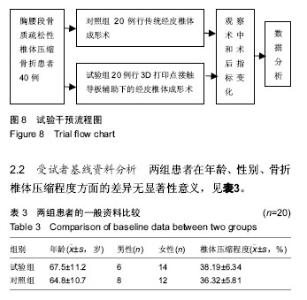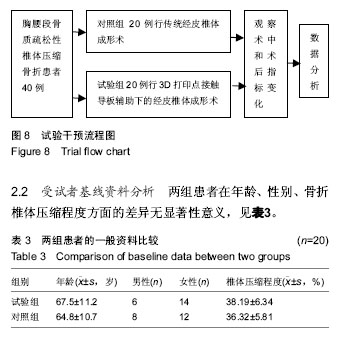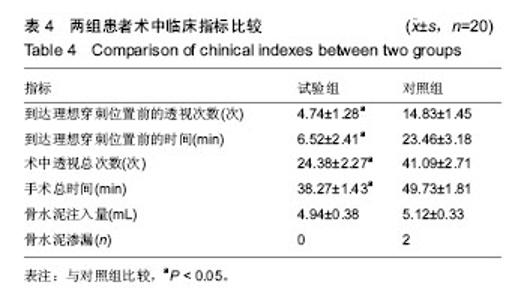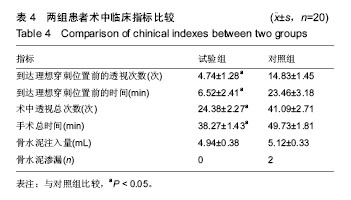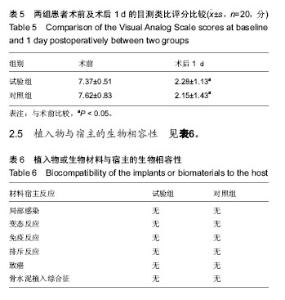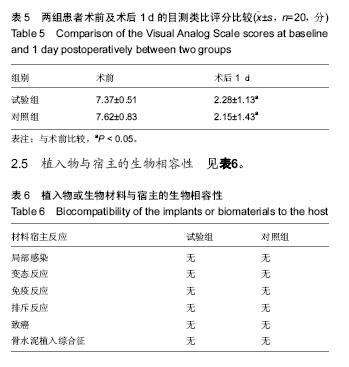| [1] 粟迎春.经皮椎体成形术和经皮椎体后凸成形术治疗骨质疏松性椎体压缩骨折的疗效[J].实用医学杂志,2017,33(2):273-275.[2] 张功林,葛宝丰.经皮椎体成形术的不良反应[J].中国骨伤,2013, 26(3):257-260.[3] Komemushi A, Takizawa K, Tanaka N, et al. Differences in Trocar positioning within the vertebral body using two different positioning methods: effect on trainee performance. Radiol Res Pract. 2011;2011:830961. [4] 宓士军,高景春.椎体成形术穿刺定位导向器临床应用体会[J].中国矫形外科杂志,2006,12(22):1751-1751.[5] 毛晓芬,唐龙,杨波,等.经皮脊柱三维定位器的应用研究[J].中华骨科杂志,2015,35(10):1061-1067.[6] 王黎明,俞忠,桂建超,等.计算机导航辅助下经皮椎体成形术[J].中华骨科杂志,2006,26(10):676-681.[7] 刘建坤,邓树才.3D打印技术在脊柱外科中的地位与作用[J].中国组织工程研究,2017,21(7):1131-1136.[8] 庞骄阳,赵岩,肖宇龙,等.3D打印技术在脊柱外科的应用[J].中国组织工程研究,2016,20(4):577-582.[9] Pu X, Luo C, Lu T, et al. Clinical application of atlantoaxial pedicle screw placement assisted by a modified 3d-printed navigation template. Clinics (Sao Paulo). 2018;73:e259. [10] 许可,薄晓鹏,郑旺,等.3D打印个体化椎弓根导板研制及模拟置钉的准确性[J].中国组织工程研究,2017,21(23):3724-3729.[11] 邓烨,陈嘉华,罗立镇,等.3D打印及导航技术在腰椎滑脱手术中的应用价值[J].海南医学,2018,29(7):939-941.[12] Azimifar F, Hassani K, Saveh AH, et al. A medium invasiveness multi?level patient’s specific template for pedicle screw placement in the scoliosis surgery. BioMed Engineering Online. 2017;16(1):130. [13] 李惠民,陈银河,申才良.经皮椎体后凸成形术治疗骨质疏松性椎体压缩骨折远期不良反应的Meta分析[J].中国脊柱脊髓杂志, 2017,27(7):592-598.[14] Guan H, Yang H, Mei X, et al. Early or delayed operation, which is More optimal for kyphoplasty? A retrospective study on cement Leakage during kyphoplasty. Injury. 2012;43: 1698-1703. [15] 罗七平.高粘度骨水泥椎体成形术治疗骨质疏松伴椎体压缩性骨折的临床疗效[J].国际老年医学杂志,2018,39(6):297-300.[16] 中国健康促进基金会骨质疏松防治中国白皮书编委会.骨质疏松症中国白皮书[J].中华健康管理学杂志,2009,3(3):148-154.[17] 杨惠林,刘昊,殷国勇,等.中国经皮椎体后凸成形术治疗骨质疏松性椎体骨折现状与创新[J].中华骨质疏松和骨矿盐疾病杂志, 2017,10(1):12-19.[18] Teasell R, Dittmer DK. Complications of immobilization and bed rest. Part 2: other complications. Can Fam Physician. 1993;39:1440-1442, 1445-1446. [19] 袁友红,肖恩华.经皮椎体成形术研究进展[J].国外医学临床放射学分册,2003,26(5):305-307.[20] 念丁芳,周军,李文华,等.经皮穿刺椎体成形术[J].医学影像学杂志,2003,13(8):549-551.[21] 王欣文,刘继军,王文涛,等.3D打印技术在经皮椎体成形术中的临床应用[J].中国现代手术学杂志,2017,21(5):321-326.[22] 熊伟,黄象望,向铁成,等.自制组合套件在经皮椎体成形术中的临床应用[J].医学临床研究,2015,32(12):2369-2372.[23] 赵汝岗,张强,赵昌松,等.3D打印经皮导板导航在骨质疏松性椎体压缩骨折经皮椎体后凸成形术中的初步应用[J].中国医师进修杂志,2016,39(11):1030-1032.[24] 倪鹏辉,刘大鹏,张鹰,等.3D打印个体化导向板在经皮椎体成形术中的应用效果观察[J].中国骨与关节损伤杂志, 2017,32(11): 1131-1134.[25] Li J, Lin JS, Yang Y, et al. 3-Dimensional printing guide template assisted percutaneous vertebroplasty: technical note. J Clin Neurosci. 2018;52:159-164. [26] 李坚,陈其昕,张金喜,等.经皮椎体成形骨水泥注入治疗老年脊椎骨质疏松压缩性骨折的疗效[J].中国老年学杂志, 2014,38(15): 4376-4378. |
